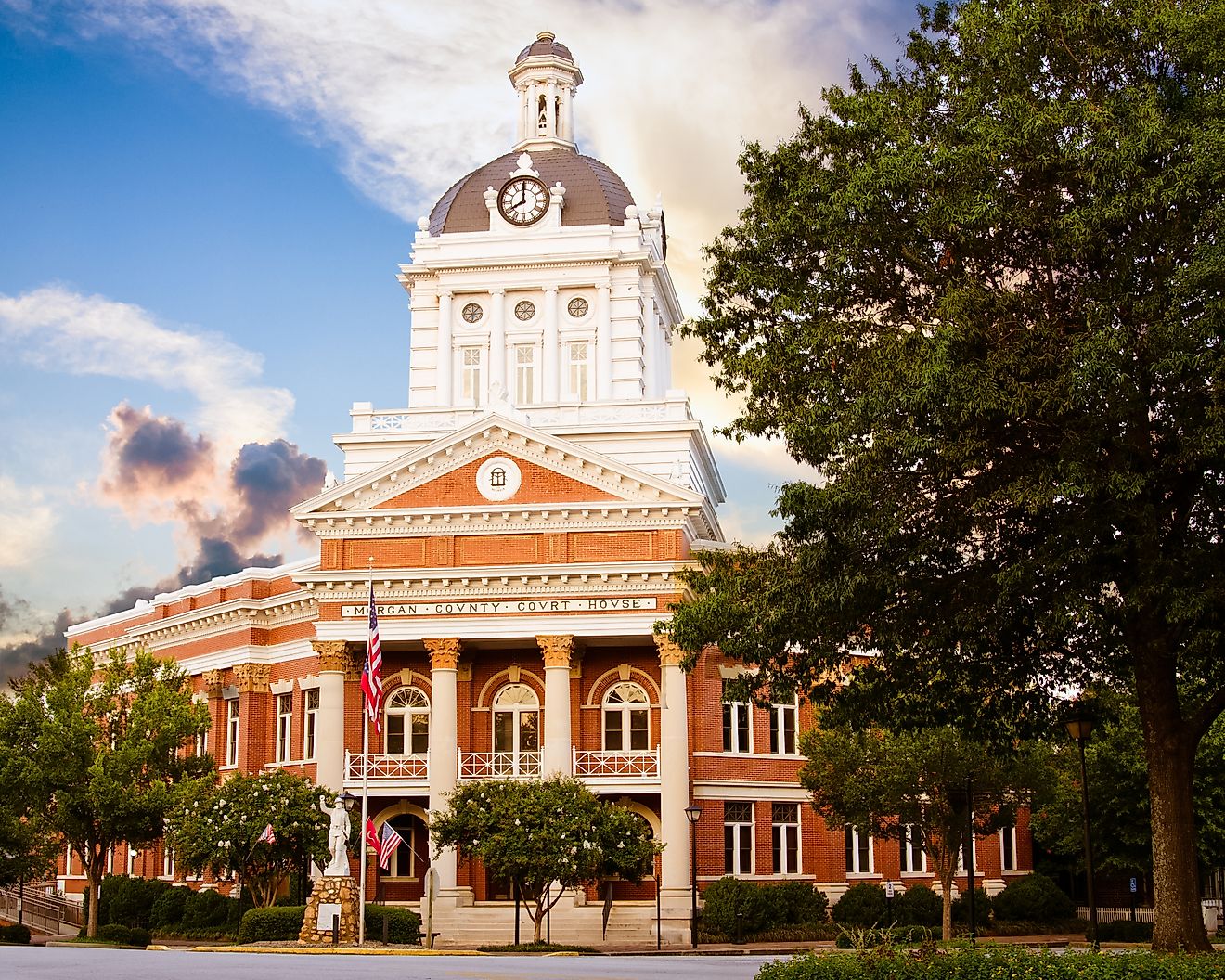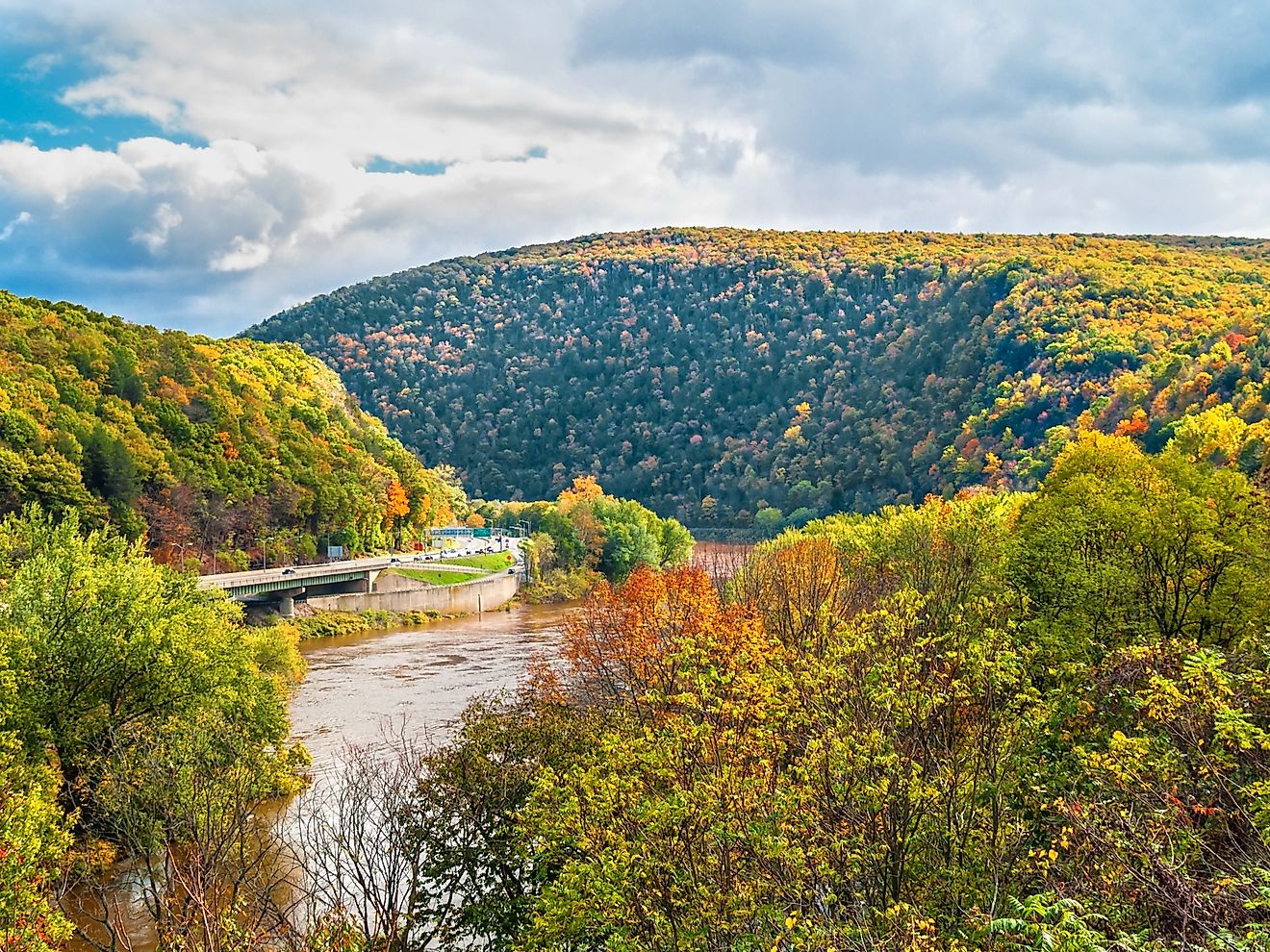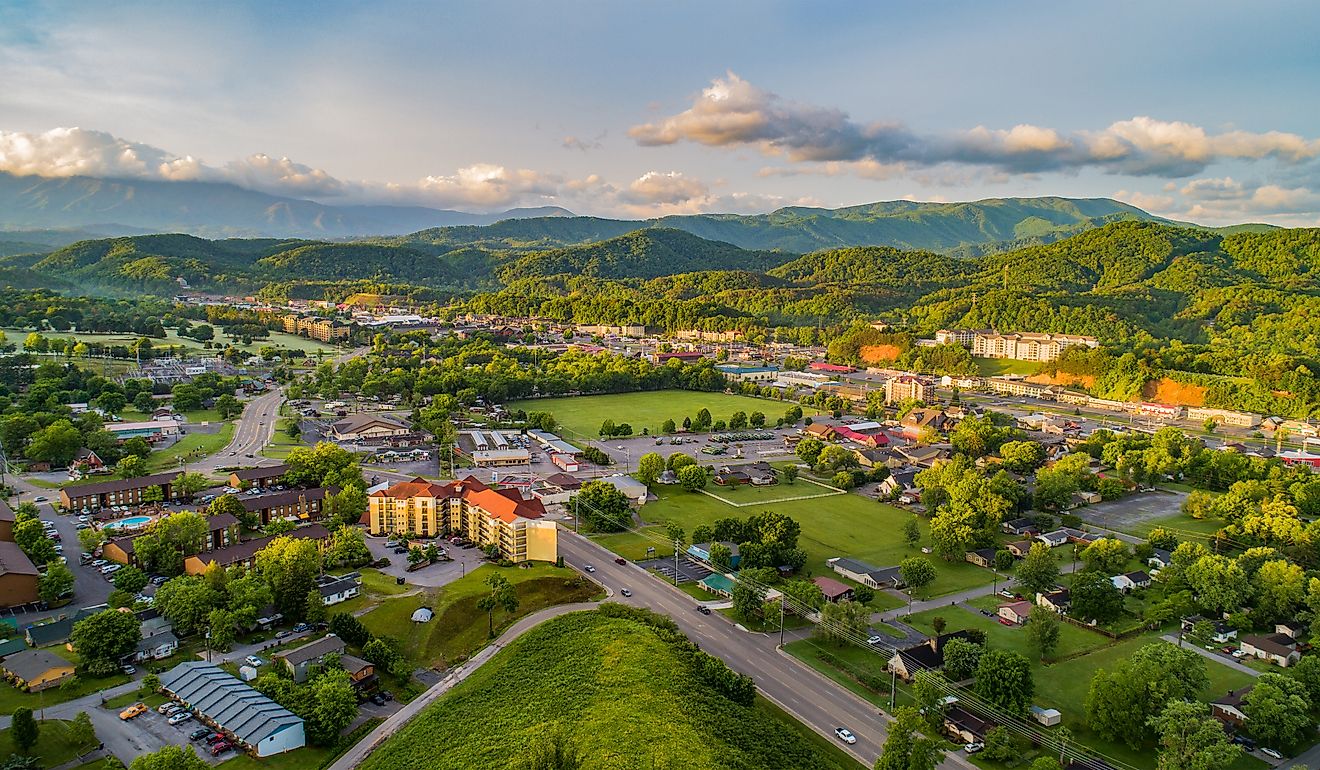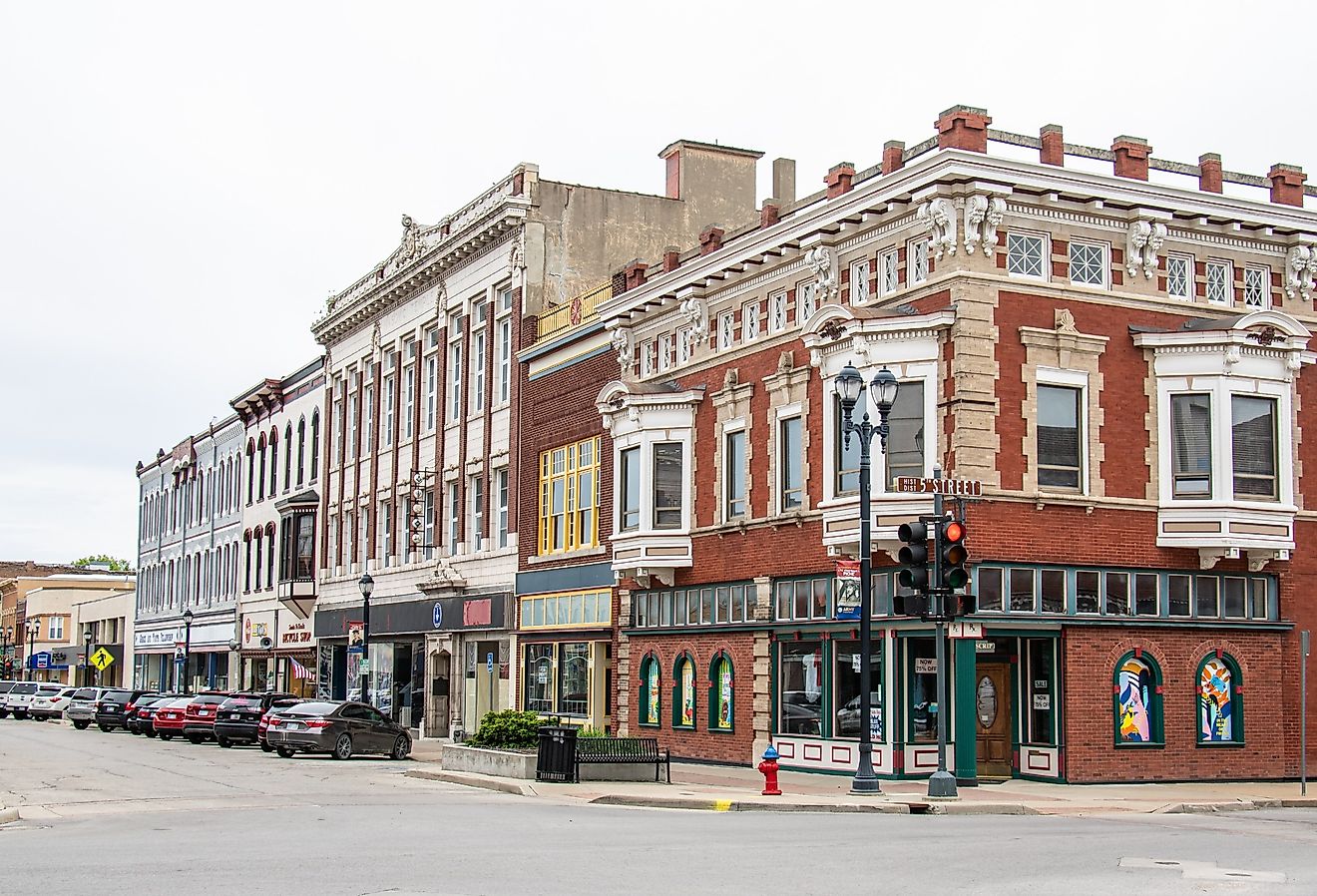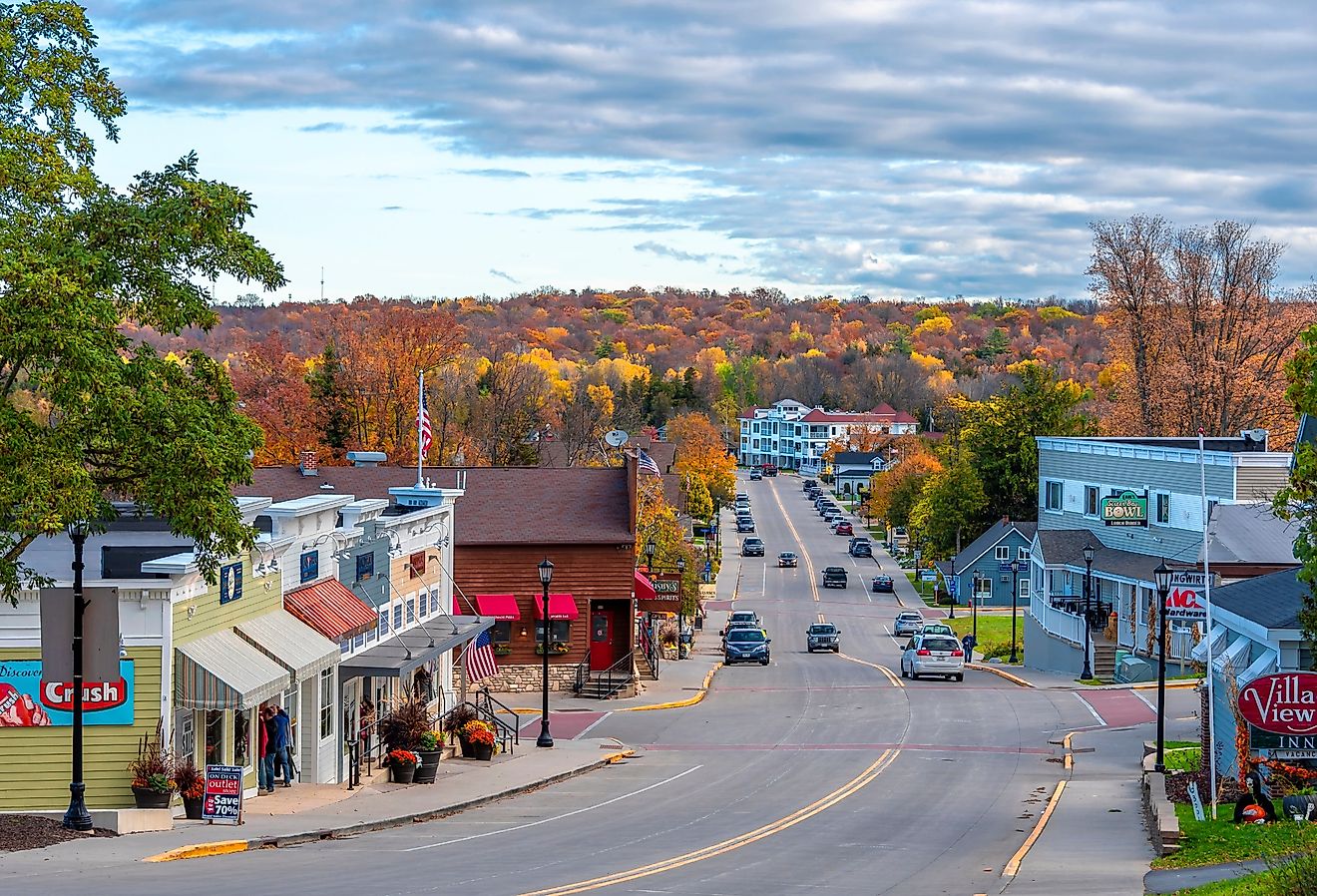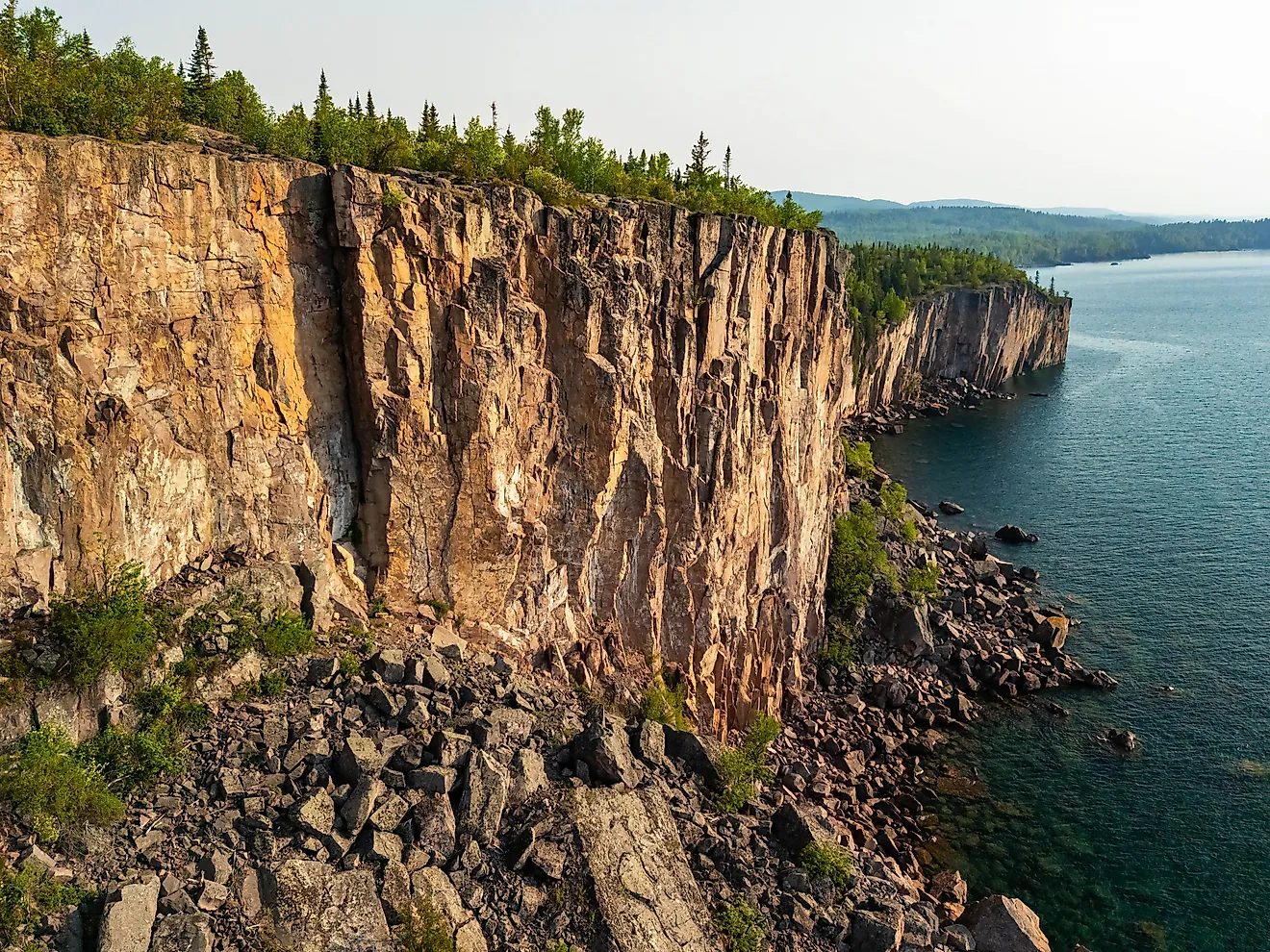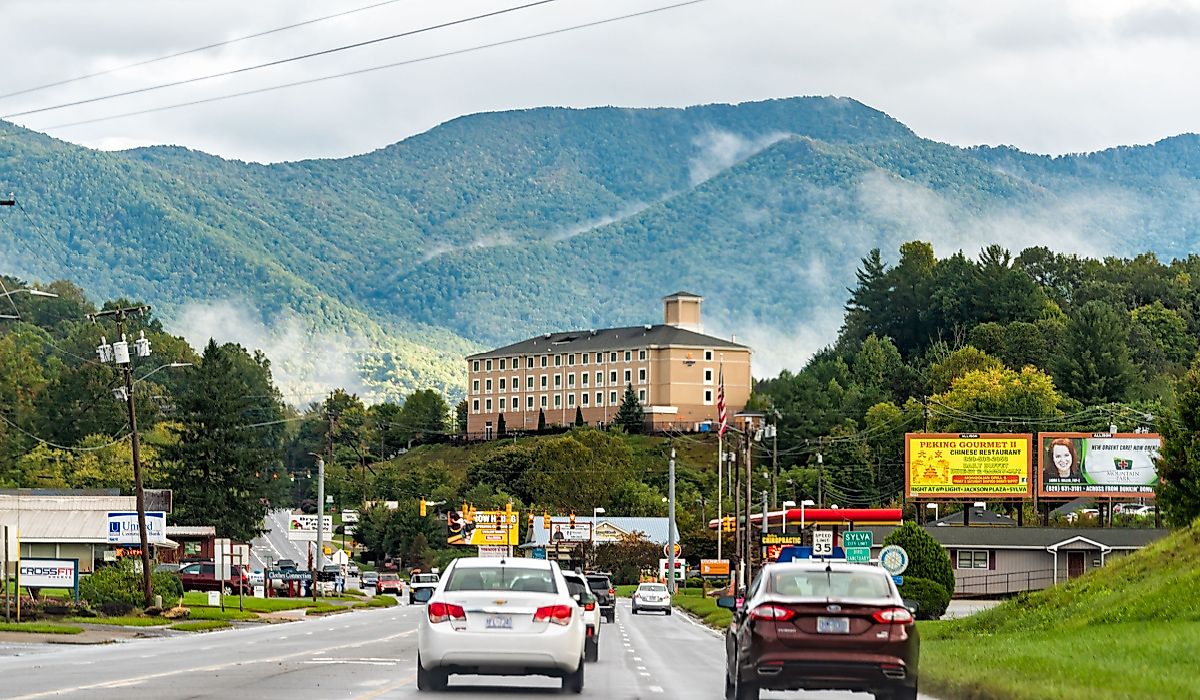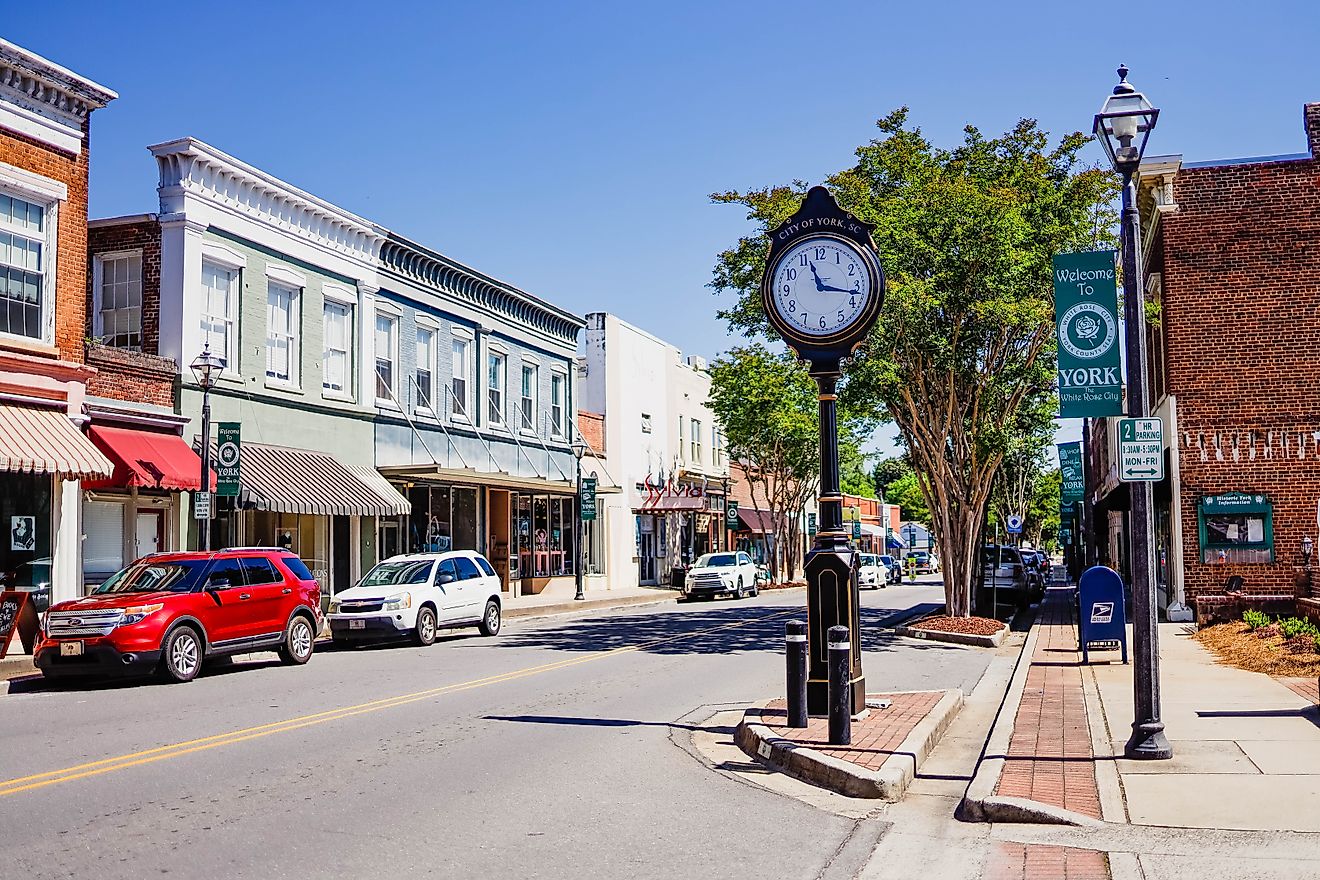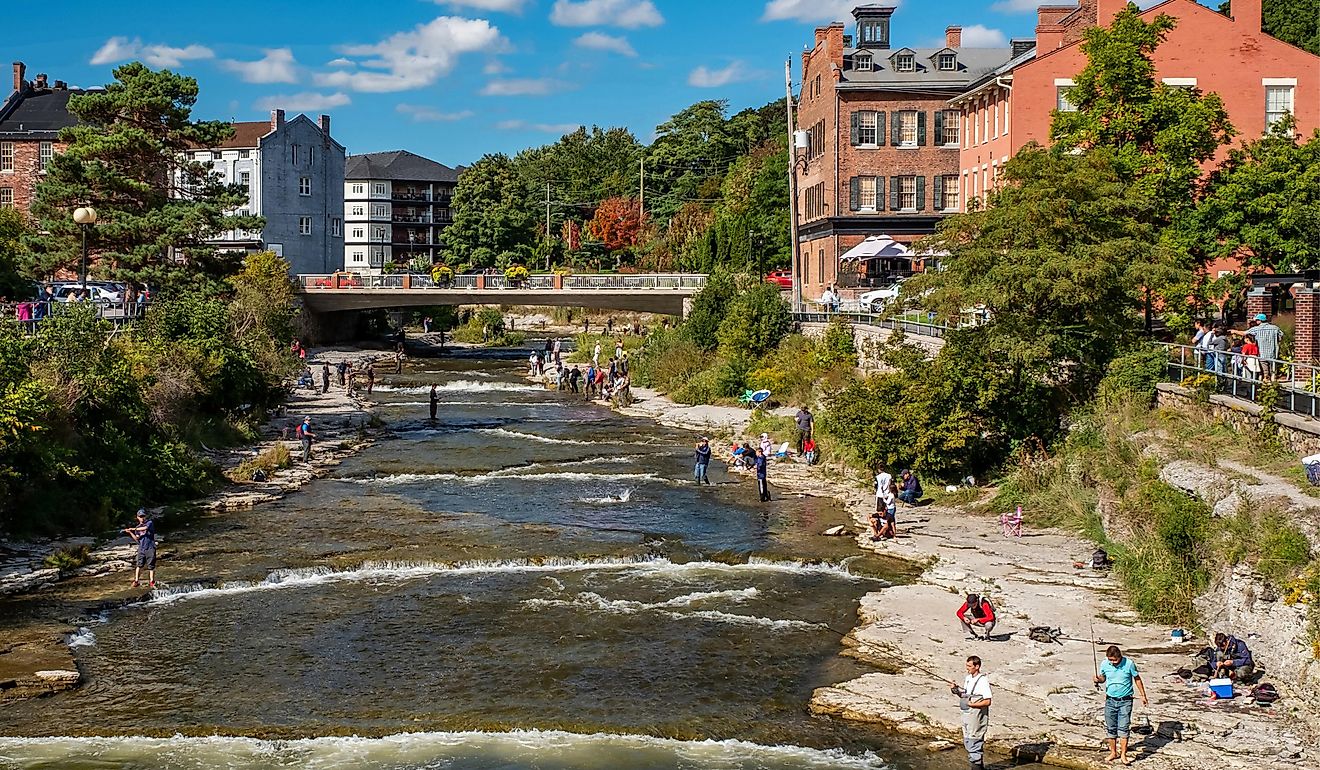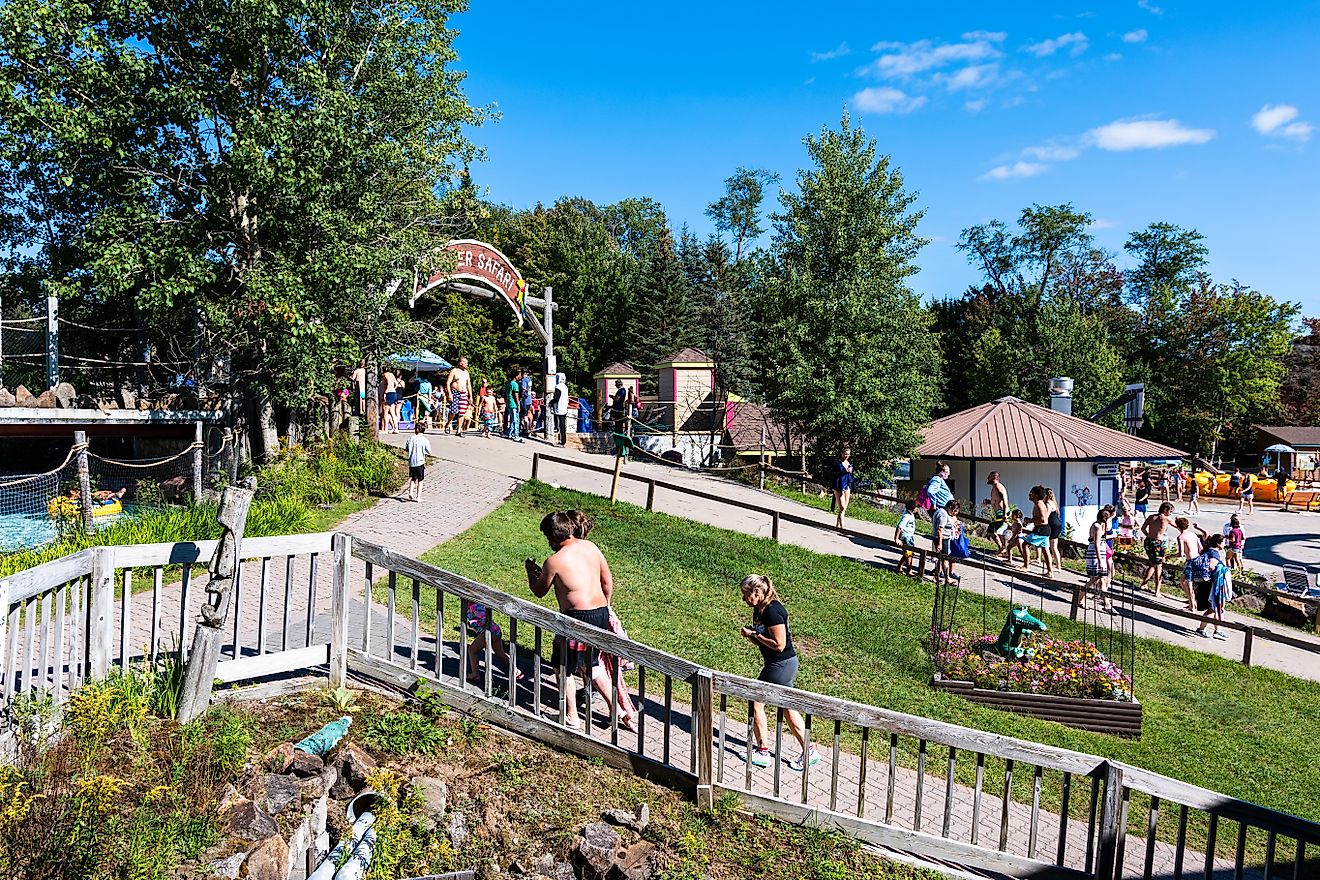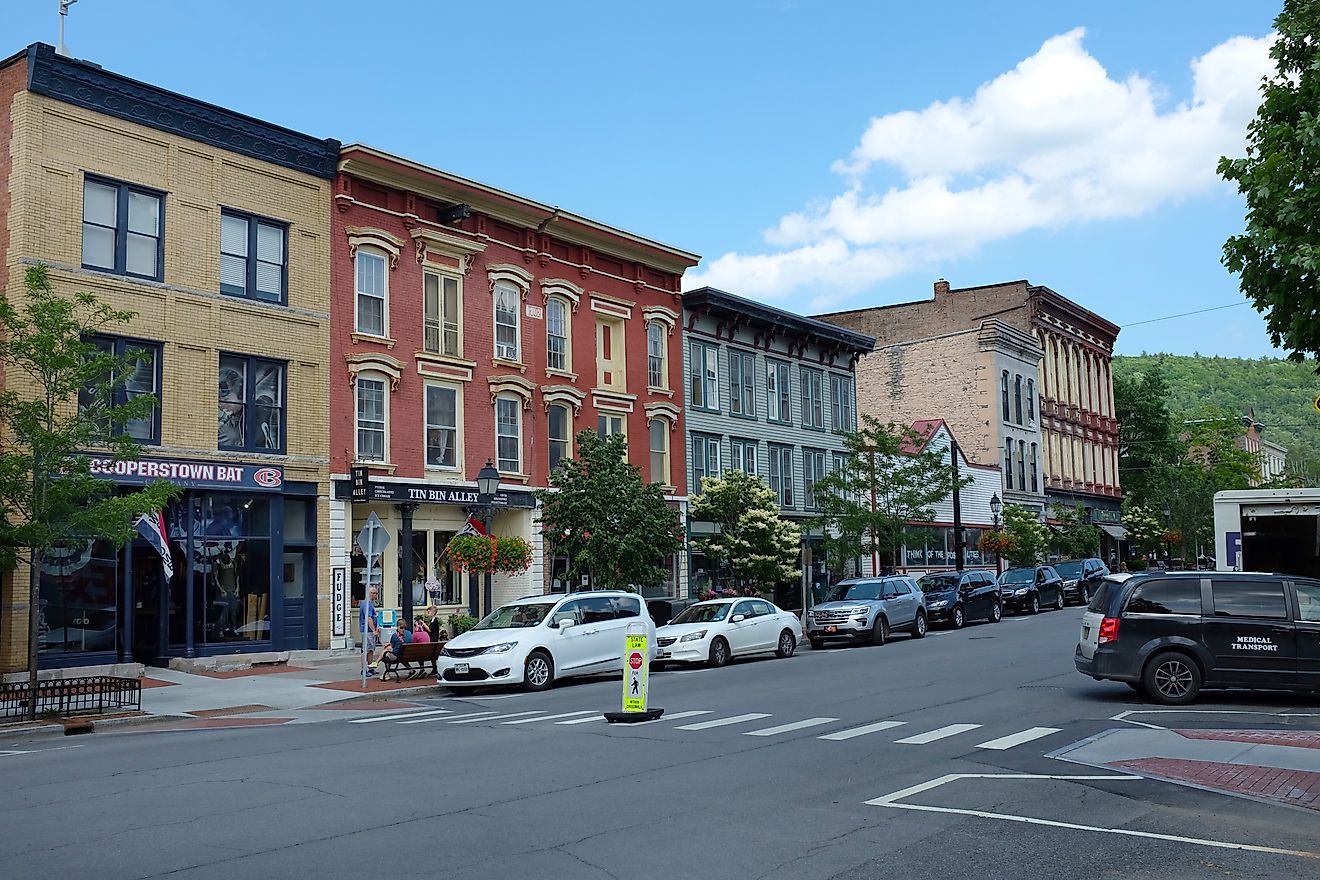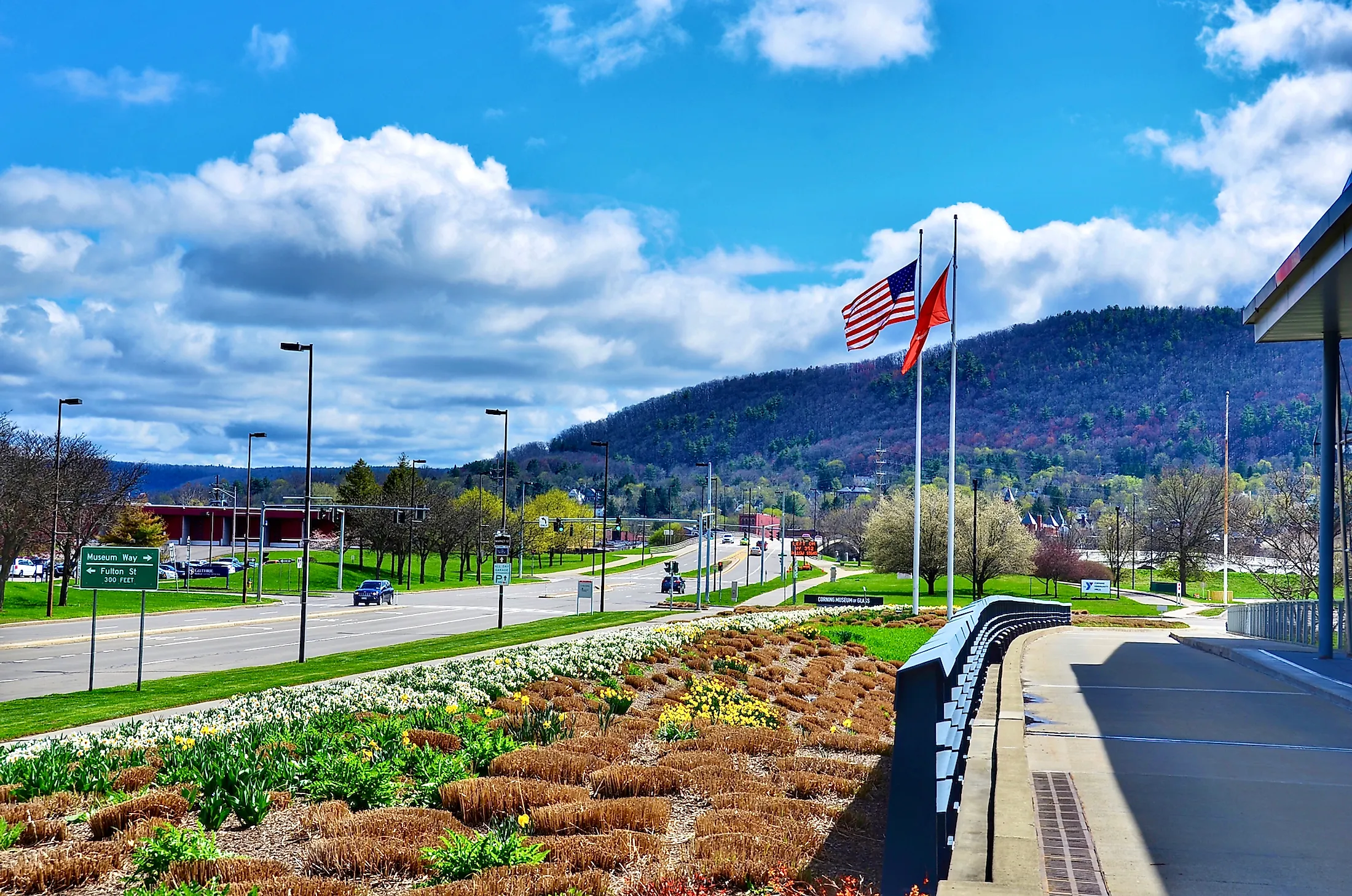
Corning, New York
Corning is a small city located in Steuben County in the US State of New York. Founded in the late 18th century, the city began as a lumber town. In the mid-19th century, however, it began emerging as a prominent center for glass manufacturing. In fact, Corning’s history is so intertwined with everything about glass that it has been nicknamed America’s Crystal City. The city even has a museum dedicated solely to glass, its history, and how it is used to shape people’s daily lives. Corning is also home to a small but fascinating art museum, as well as historic districts in which people can learn about what life in the city and surrounding region was like in the past centuries.
Geography Of Corning
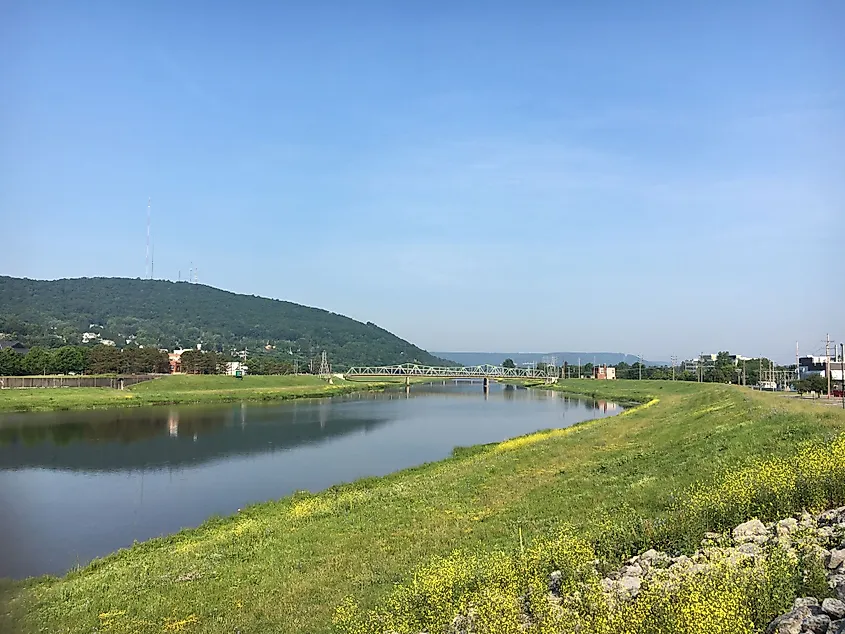
Corning is located in Steuben County in the south-central part of the US State of New York, not too far from the border with Pennsylvania. The entire city is surrounded by the city limits of the larger but less populous Town of Corning. The town of Hornby is situated to the north of Corning. Further north is the Finger Lakes. To the west are the neighboring towns of Painted Post and Gang Mills. To the east of Corning is the town of Big Flats. The Chemung River bisects Corning, splitting it into northern and southern parts. The city of Corning has a total area of 8.5 sq. km, of which 0.4 sq. km is occupied by water and 8.1 sq. km is occupied by land.
Population And Economy Of Corning
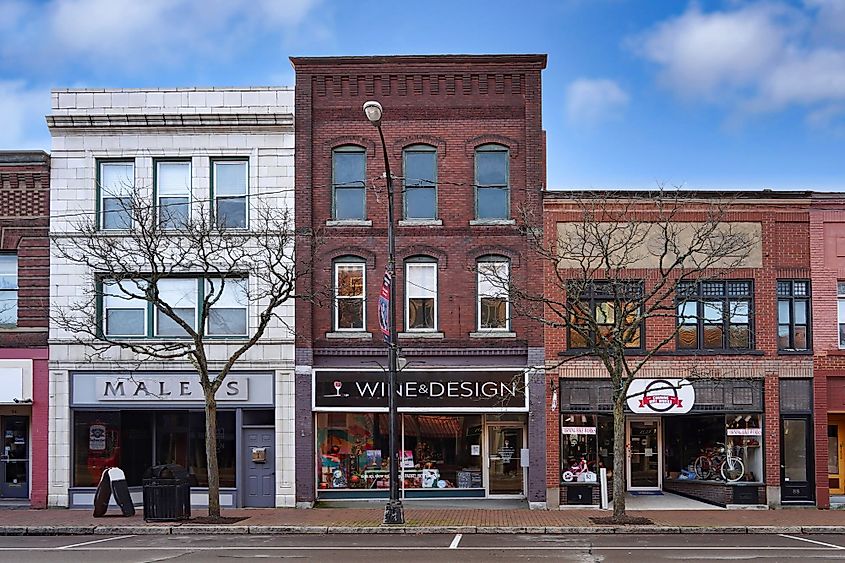
As of 2019, Corning has a population of 10,696 people with a median age of 37.7. As of 2019, about 479 people (4.48% of the residents) of Corning were born outside the country. The most common birthplace of the foreign-born residents of New York was the Dominican Republic, followed by China and Jamaica. The largest ethnic groups in Corning are the non-Hispanic White representing 92.3%, followed by the African Americans at 2.19%, Asians at 1.75%, two or more at 1.53%, and Hispanic White at 0.954%. About 94% of Corning’s residents speak only English. Spanish is spoken by 2.1% of the population. Over 95.5% of residents in Corning were born in the United States, while 73.57% were born in the city itself. More than half of the city’s foreign-born residents are from Asia, 32% are from Europe, and 13% are from other parts of North America.
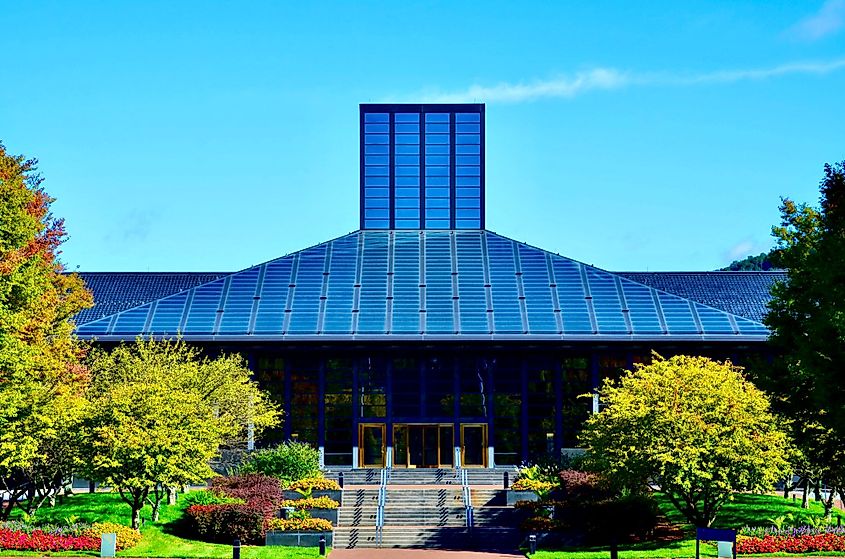
The median household income in Corning in 2019 was $50,321, and the poverty rate was 16.42%. Poverty is especially acute among Hispanic households, as more than 46% of these households live in poverty, even though Hispanics make a small percent of Corning’s entire population. Above all, Corning is known for its history of glass manufacturing and innovation. It is the headquarters of the Fortune 500 company Corning Incorporated, which manufactures glass and ceramic products for industrial, scientific, and technical uses.
Attractions In Corning
Corning Museum of Glass
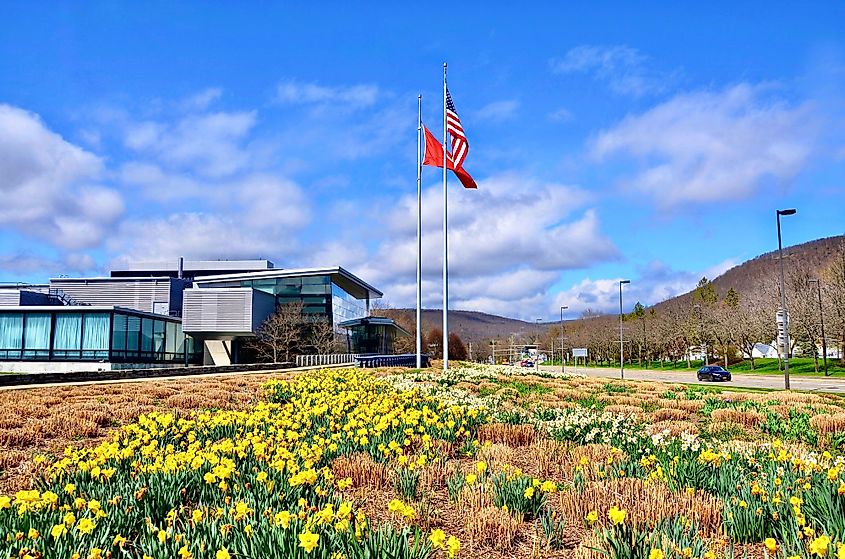
Perhaps the most well-known of Corning’s attractions is the Corning Museum of Glass. The museum, which is housed in a building designed to mimic the flow of glass, tells the history of the material, which spans over 3,500 years. There is a gallery in the museum dedicated exclusively to the story of glass in Corning. Corning has created everything from heat-resistant Pyrex to glass used in LCD televisions and smartphones. It has been at the forefront of optical fiber development, which is used to transmit people’s communications. Glass used on NASA space shuttles has also been manufactured in Corning. The Corning Museum of Glass also contains the world’s most extensive collection of art glass.
Rockwell Museum
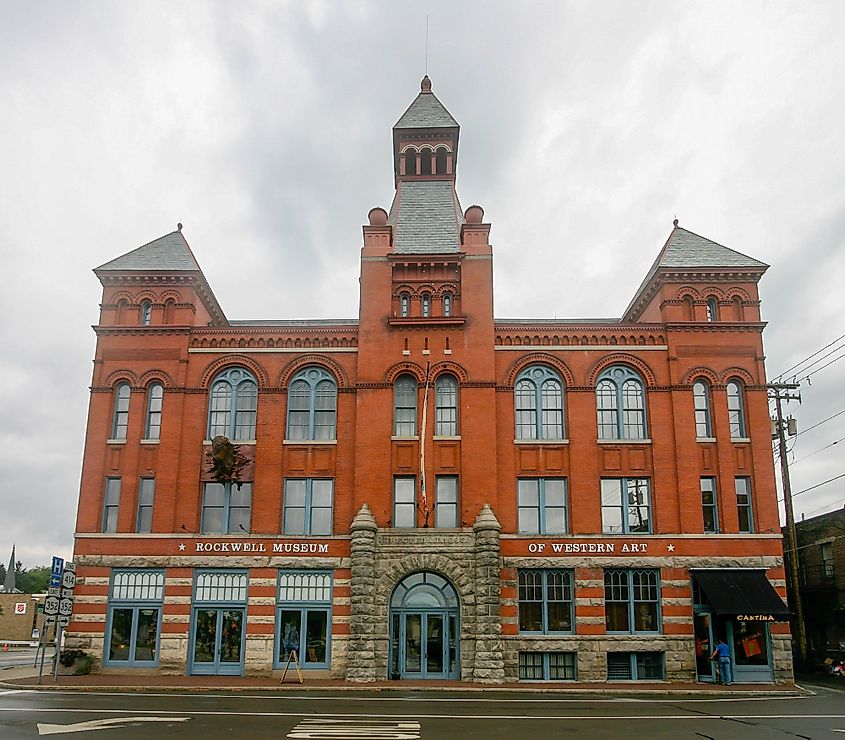
The Rockwell Museum, located in Corning’s historic city hall building, is an art museum containing both Western and Native American art. It is upstate New York’s only Smithsonian Affiliate. The museum is named after its founding collectors, Bob and Hertha Rockwell, who at one time shared their entire collection with the public at the family department store located downtown. Artwork featured in the museum includes paintings and sculptures from artists like Albert Bierstadt, Frederick Remington, Charles Russell, Cyrus Dallin, William Robinson Leigh, and Thomas Moran.
Other Attractions
Two other notable attractions located in Corning are the Heritage Village of the Southern Finger Lakes and Corning’s Gaffer District. The former is a collection of historic buildings, including a one-room schoolhouse, a working blacksmith shop, a one-room log cabin, and Corning's oldest building – the Patterson Inn and Tavern. Corning’s Gaffer District is a historic district that contains more than a hundred shops, studios, galleries, and restaurants. It also hosts the city’s annual Glass Fest.
Brief History Of Corning
Corning was first settled by people of European descent in 1789. In 1796, the settlement was named Painted Post, but in 1837, its name was changed to Corning after Erasmus Corning, a promoter of a railroad connecting coal mines in Pennsylvania with the Chemung Canal. Corning was first incorporated as a village in 1848 and as a city in 1890. At first, the key industry in the village was lumber. The first settlers used the river system in the area to transport logs and finished lumber downstream to buyers. The lumber industry gave rise to the mills that were built in Corning. In fact, at one time, the mills in the Corning area were said to be among the largest in the world. However, after the lumber was depleted, these mills moved north to new forests.
The Chemung Canal System was also essential for developing Corning’s economy. Canal cargoes from Corning included soft coal, timber, tobacco, grain, and whiskey. After the American Civil War, Corning experienced an industrial boom. One of the new industries to come to the city was glass manufacturing. In 1868, the Brooklyn Flint Glass Works, now called Corning Incorporated, was founded. Thus, glass manufacturing became the chief industry in the city. In the 1880s, Corning became a central railroad town. A major railroad disaster occurred near Corning in 1912, when a train wreck in the town of Gibson killed 39 people. In 1972, another major disaster took place in the Corning area in the form of a massive flood. It began as the remnants of a hurricane, Hurricane Agnes, hit southern New York State. This weather-maker combined with another storm system from Ohio and dropped around 203 mm of rain in the Chemung River basin. As a result, the Chemung River burst its banks, and the city of Corning was flooded. The flood killed 21 people and caused severe damage to the city, totaling close to $230 million, including damage to its famed Museum of Glass.
